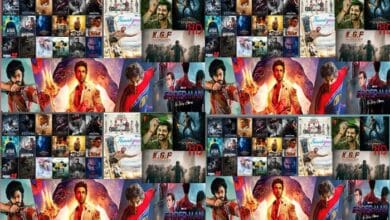The Evolution and Impact of Dot Movies in Modern Cinema

Introduction
Dot movies, also known as pixel films or dot-pixel animations, are a type of digital filmmaking where each frame is composed of dots or pixels. Unlike traditional films that rely on continuous images, dot movies use discrete points to build visuals. This technique allows for greater manipulation of each frame, offering filmmakers unprecedented control over the final product. Dot movies are characterized by their unique visual style, which can range from hyper-realistic to abstract, depending on the creative intent.
The History of Dot Movies
The concept of dot movies can be traced back to the early days of digital art and computer graphics. In the 1980s, pioneering artists experimented with pixel art, creating intricate images using a limited number of pixels. As technology advanced, these techniques found their way into animation and film. One of the earliest examples of dot movies is “Toy Story” (1995), which utilized digital animation to create a fully immersive world. Over the years, the evolution of dot movies has been marked by technological advancements and the creative vision of filmmakers pushing the boundaries of what is possible.
The Technology Behind Dot Movies
At the heart of dot movies is the technology that enables the creation and manipulation of pixels. Advanced computer graphics software, such as Adobe After Effects and Autodesk Maya, plays a crucial role in producing dot movies. These tools allow artists to create detailed animations, control lighting and shading, and render high-quality visuals. Additionally, motion capture technology is often used to bring realistic movements to characters in dot movies. The integration of artificial intelligence and machine learning has further revolutionized the production process, enabling more efficient and sophisticated dot movies.
Dot Movies vs. Traditional Animation
Dot movies differ significantly from traditional animation techniques. In traditional animation, artists draw each frame by hand or use stop-motion techniques to create movement. Dot movies, on the other hand, rely on digital pixels to construct each frame. This difference in methodology results in distinct visual styles and storytelling possibilities. Dot movies can achieve a level of detail and realism that is challenging to replicate with traditional methods. However, both forms of animation have their own merits and continue to coexist in the film industry.
The Artistic Potential of Dot Movies
One of the most exciting aspects of dot movies is their artistic potential. The use of pixels as the primary building blocks allows for a wide range of visual styles, from pixel art to photorealistic graphics. Filmmakers can experiment with colors, textures, and shapes in ways that were previously unimaginable. This creative freedom has led to the production of visually stunning dot movies that captivate audiences. Additionally, dot movies can incorporate elements of virtual reality (VR) and augmented reality (AR), providing viewers with immersive and interactive experiences.
The Impact of Dot Movies on Storytelling
Dot movies have a profound impact on storytelling in cinema. The ability to manipulate each pixel offers filmmakers greater control over visual elements, enabling them to convey emotions and narratives more effectively. Dot movies can seamlessly blend fantasy and reality, creating unique worlds that enhance the storytelling experience. This level of detail and immersion helps audiences connect with the characters and plot on a deeper level. As a result, dot movies have become a powerful tool for filmmakers looking to push the boundaries of conventional storytelling.
The Commercial Success of Dot Movies
The commercial success of dot movies is a testament to their growing popularity and impact on the film industry. Blockbuster films like “Avatar” (2009) and “Frozen” (2013) have showcased the potential of dot movies to generate significant revenue. These films have not only achieved critical acclaim but also set new benchmarks for visual effects and animation. The success of dot movies extends beyond the box office, influencing merchandise sales, theme park attractions, and video games. As audiences continue to embrace dot movies, their commercial potential remains robust.
The Future of Dot Movies
The future of dot movies looks promising, with advancements in technology paving the way for new possibilities. Innovations in AI and machine learning are expected to streamline the production process, making it easier for filmmakers to create high-quality dot movies. Additionally, the increasing accessibility of VR and AR technologies will enable more immersive and interactive experiences. As dot movies continue to evolve, they are likely to play a central role in the future of cinema, offering audiences novel and engaging ways to experience stories.
Challenges Facing Dot Movies
Despite their potential, dot movies face several challenges. The high cost of production and the need for advanced technical expertise can be barriers for smaller studios and independent filmmakers. Additionally, the reliance on digital technology makes dot movies susceptible to issues such as data loss and software malfunctions. There is also the challenge of audience reception, as some viewers may prefer traditional forms of animation. However, as technology continues to advance and more filmmakers explore the potential of dot movies, these challenges are likely to be addressed.
Iconic Dot Movies and Their Legacy
Several iconic dot movies have left an indelible mark on the film industry. Films like “The Matrix” (1999), “Avatar” (2009), and “Frozen” (2013) have demonstrated the artistic and commercial potential of dot movies. These films have set new standards for visual effects and storytelling, inspiring a new generation of filmmakers. The legacy of these iconic dot movies continues to influence the industry, encouraging innovation and creativity. As we look to the future, the impact of these trailblazing films will continue to be felt.
Conclusion
Dot movies represent a revolutionary development in modern cinema, offering filmmakers unprecedented creative possibilities. From their origins in digital art to their current status as box office juggernauts, dot movies have reshaped the landscape of animation and storytelling. As technology continues to evolve, dot movies are poised to play an even more significant role in the future of cinema. Their unique visual style, artistic potential, and commercial success make dot movies a fascinating subject for filmmakers and audiences alike.
FAQs
What are dot movies?
- Dot movies are films where each frame is composed of pixels or dots, allowing for greater manipulation and control over the visuals.
How do dot movies differ from traditional animation?
- Unlike traditional animation, which relies on hand-drawn or stop-motion techniques, dot movies use digital pixels to create each frame, resulting in distinct visual styles.
What is the technology behind dot movies?
- Dot movies rely on advanced computer graphics software, motion capture technology, and increasingly, artificial intelligence and machine learning to create detailed animations.
What is the impact of dot movies on storytelling?
- Dot movies offer filmmakers greater control over visual elements, enabling more effective storytelling and the creation of immersive, unique worlds.
What is the future of dot movies?
- The future of dot movies looks promising, with advancements in AI, VR, and AR technologies paving the way for new possibilities and more immersive cinematic experiences.





